-
 bitcoin
bitcoin $105968.894684 USD
4.17% -
 ethereum
ethereum $3639.320047 USD
7.62% -
 tether
tether $1.000339 USD
0.06% -
 xrp
xrp $2.407774 USD
5.96% -
 bnb
bnb $1011.704193 USD
2.28% -
 solana
solana $166.942754 USD
6.37% -
 usd-coin
usd-coin $1.000143 USD
0.03% -
 tron
tron $0.291515 USD
0.25% -
 dogecoin
dogecoin $0.181682 USD
4.06% -
 cardano
cardano $0.585450 USD
4.54% -
 hyperliquid
hyperliquid $42.099968 USD
5.20% -
 chainlink
chainlink $16.160745 USD
5.45% -
 zcash
zcash $645.269648 USD
12.96% -
 bitcoin-cash
bitcoin-cash $507.430338 USD
2.80% -
 stellar
stellar $0.290357 USD
3.69%
How to filter EMA when there is a false breakout?
EMA helps filter false breakouts in crypto trading by analyzing price action relative to different EMA periods, enhancing decision-making and reducing potential losses.
May 23, 2025 at 05:29 am
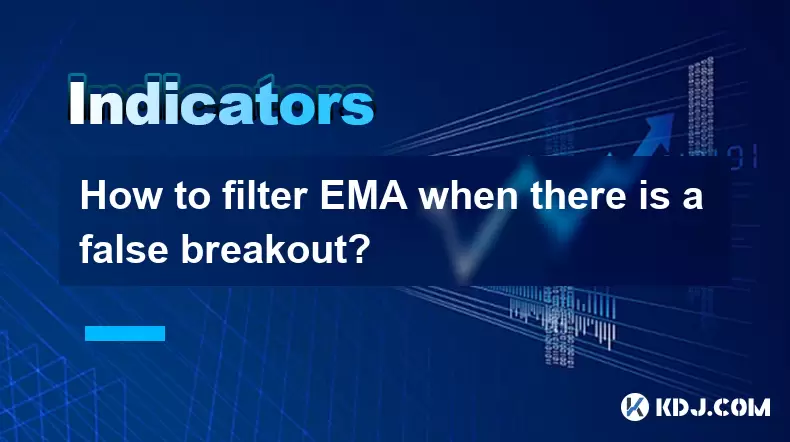
Understanding EMA and False Breakouts
When trading cryptocurrencies, the Exponential Moving Average (EMA) is a popular technical indicator used to gauge market trends over a specified period. The EMA places more weight on recent prices, making it more responsive to new information compared to the Simple Moving Average (SMA). However, traders often encounter false breakouts, which occur when the price temporarily moves beyond a significant level of support or resistance but fails to sustain that move. Filtering these false breakouts using EMA can help traders make more informed decisions and avoid potential losses.
Identifying False Breakouts
To effectively filter false breakouts, it's crucial to first understand how to identify them. A false breakout typically happens when the price breaks through a key level but quickly reverses back within a short period. Here are some key signs of a false breakout:
- Lack of Volume: If the breakout occurs with low trading volume, it's often a sign of a false move.
- Quick Reversal: The price breaks out but then rapidly moves back to the previous range.
- Failure to Hold: The price fails to maintain the breakout and returns to the previous consolidation area.
Using EMA to Filter False Breakouts
The EMA can be a valuable tool in filtering false breakouts. By using different time frames and EMA periods, traders can enhance their ability to distinguish between genuine and false breakouts. Here’s how to use EMA to filter false breakouts effectively:
Setting Up the EMA
- Choose the Right EMA Periods: Depending on your trading style, select appropriate EMA periods. For short-term trading, you might use 9-day and 21-day EMAs, while for longer-term trends, 50-day and 200-day EMAs could be more suitable.
- Apply Multiple EMAs: Using multiple EMAs can provide a clearer picture. For instance, if the shorter-term EMA (e.g., 9-day) crosses above the longer-term EMA (e.g., 21-day), it might signal a bullish trend, but if the price fails to hold above these EMAs, it could indicate a false breakout.
Analyzing the Breakout
- Observe Price Action Relative to EMAs: When a breakout occurs, watch how the price behaves in relation to the EMAs. If the price breaks out but quickly falls back below the shorter-term EMA, it's likely a false breakout.
- Confirm with Other Indicators: Use other technical indicators like the Relative Strength Index (RSI) or the Moving Average Convergence Divergence (MACD) to confirm the breakout. If these indicators do not support the breakout, it's more likely to be false.
Practical Example of Filtering False Breakouts with EMA
Let's walk through a practical example of how to use EMA to filter false breakouts in the cryptocurrency market.
Scenario: Bitcoin Price Breakout
- Initial Breakout: Bitcoin price breaks above a resistance level at $40,000.
- EMA Setup: You have set up 9-day and 21-day EMAs on your chart.
- Price Action: The price moves above the 9-day EMA but fails to stay above the 21-day EMA.
Steps to Analyze:
- Check Volume: If the volume during the breakout is low, it's a red flag for a false breakout.
- Monitor EMA Crossover: The price should remain above both EMAs for a valid breakout. If the price falls back below the 9-day EMA shortly after the breakout, it suggests a false move.
- Confirm with Other Indicators: Look at the RSI. If the RSI does not show overbought conditions during the breakout, it further supports the notion of a false breakout.
Adjusting EMA Parameters
Adjusting the EMA parameters can help tailor the indicator to your specific trading strategy. Here are some considerations:
- Short-Term Trading: Use shorter EMA periods (e.g., 5-day and 10-day) to capture quick market movements and identify false breakouts more rapidly.
- Long-Term Trading: Use longer EMA periods (e.g., 50-day and 200-day) to filter out short-term noise and focus on more significant trends.
Combining EMA with Other Strategies
While EMA is a powerful tool, combining it with other strategies can enhance its effectiveness in filtering false breakouts. Here are some additional strategies:
- Support and Resistance Levels: Use key support and resistance levels in conjunction with EMA. If the price breaks a resistance but falls back below the EMA and the resistance level, it's likely a false breakout.
- Candlestick Patterns: Look for bearish reversal patterns like shooting stars or bearish engulfing patterns after a breakout. These can signal a potential false breakout.
- Trend Lines: Draw trend lines to identify the overall market direction. A breakout that quickly reverses and breaks a trend line might be a false move.
FAQs
Q1: Can EMA be used effectively in all market conditions?A1: EMA can be effective in trending markets where the price moves consistently in one direction. However, in choppy or sideways markets, EMA might generate more false signals, making it less reliable.
Q2: How often should I adjust my EMA settings?A2: Adjusting EMA settings should be done based on your trading performance and market conditions. It's not necessary to change them frequently; instead, monitor their effectiveness over time and make adjustments as needed.
Q3: What other indicators work well with EMA for filtering false breakouts?A3: Besides RSI and MACD, the Bollinger Bands and the Average Directional Index (ADX) can also be used effectively with EMA to filter false breakouts. These indicators provide additional confirmation of market trends and potential false moves.
Q4: Is it possible to automate the process of filtering false breakouts using EMA?A4: Yes, it is possible to automate the process using trading algorithms and software that can monitor EMA crossovers and other indicators in real-time. However, automated systems should be thoroughly backtested to ensure their effectiveness.
Disclaimer:info@kdj.com
The information provided is not trading advice. kdj.com does not assume any responsibility for any investments made based on the information provided in this article. Cryptocurrencies are highly volatile and it is highly recommended that you invest with caution after thorough research!
If you believe that the content used on this website infringes your copyright, please contact us immediately (info@kdj.com) and we will delete it promptly.
- Mantle, Anchorage Digital, and Institutional Custody: Bridging TradFi and DeFi
- 2025-11-11 05:20:01
- XRP ETF Hype and Remittix Rise: Navigating the Evolving Crypto Landscape
- 2025-11-11 05:25:01
- UK Stablecoin Regulation: A Pivotal Step Forward?
- 2025-11-11 05:05:01
- DOT Price Eyes Breakout Amid Bitcoin Rally: A Polkadot Deep Dive
- 2025-11-11 05:35:01
- Justin Sun, Fortune, and Altcoins: Navigating the Crypto Landscape
- 2025-11-11 05:35:01
- Bitcoin, JPMorgan, and ETFs: Navigating the Crypto Landscape
- 2025-11-11 05:40:01
Related knowledge

What's the best way to learn the TRIX indicator?
Nov 10,2025 at 12:39pm
Understanding the Basics of the TRIX Indicator1. The TRIX (Triple Exponential Average) indicator is a momentum oscillator designed to filter out short...
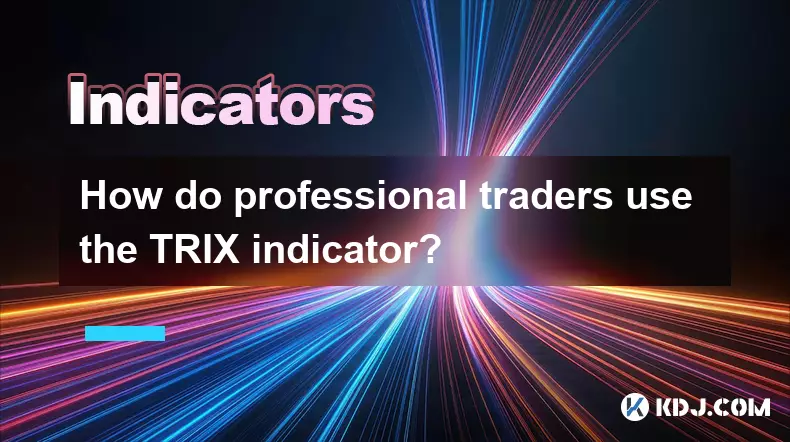
How do professional traders use the TRIX indicator?
Nov 06,2025 at 04:40pm
Understanding the TRIX Indicator in Crypto TradingThe TRIX (Triple Exponential Average) indicator is a momentum oscillator used by professional trader...
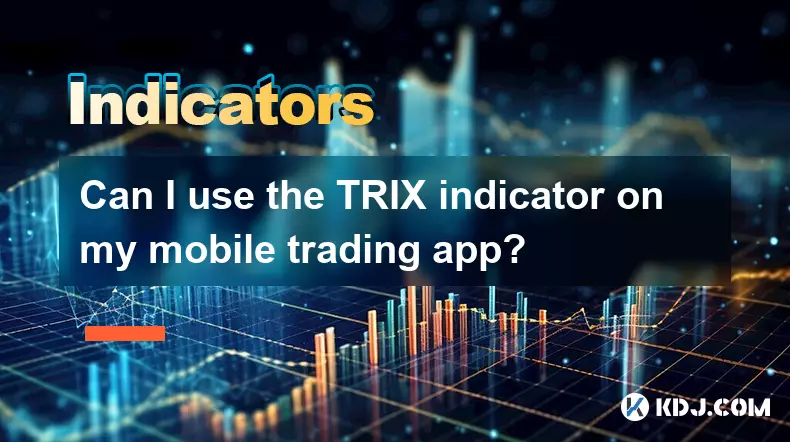
Can I use the TRIX indicator on my mobile trading app?
Nov 07,2025 at 07:40pm
The TRIX indicator, a momentum oscillator designed to filter out short-term fluctuations and highlight long-term trends, has become increasingly popul...
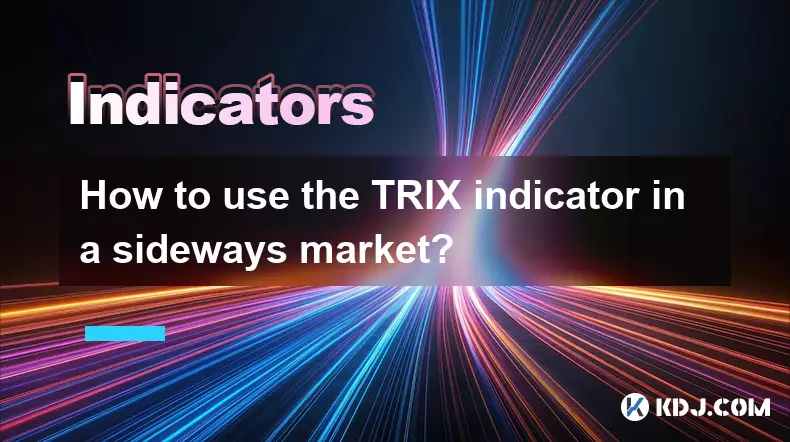
How to use the TRIX indicator in a sideways market?
Nov 10,2025 at 03:00pm
Bitcoin’s Role in Decentralized Finance Evolution1. Bitcoin remains the cornerstone of decentralized finance, serving as both a store of value and a b...
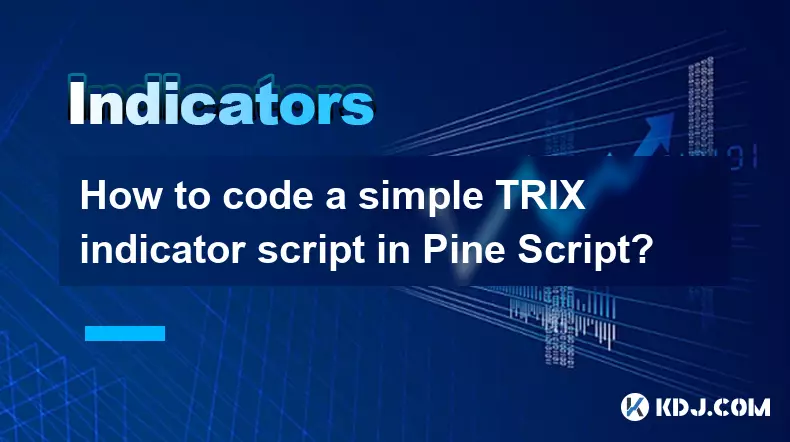
How to code a simple TRIX indicator script in Pine Script?
Nov 07,2025 at 06:20am
How to Code a Simple TRIX Indicator in Pine Script The TRIX (Triple Exponential Moving Average) indicator is widely used in cryptocurrency trading to ...
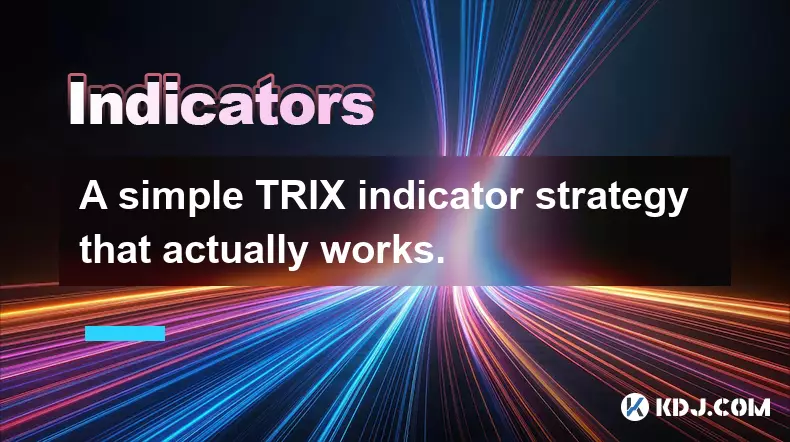
A simple TRIX indicator strategy that actually works.
Nov 08,2025 at 05:39pm
Understanding the TRIX Indicator in Crypto Trading1. The TRIX (Triple Exponential Average) indicator is a momentum oscillator designed to filter out s...

What's the best way to learn the TRIX indicator?
Nov 10,2025 at 12:39pm
Understanding the Basics of the TRIX Indicator1. The TRIX (Triple Exponential Average) indicator is a momentum oscillator designed to filter out short...

How do professional traders use the TRIX indicator?
Nov 06,2025 at 04:40pm
Understanding the TRIX Indicator in Crypto TradingThe TRIX (Triple Exponential Average) indicator is a momentum oscillator used by professional trader...

Can I use the TRIX indicator on my mobile trading app?
Nov 07,2025 at 07:40pm
The TRIX indicator, a momentum oscillator designed to filter out short-term fluctuations and highlight long-term trends, has become increasingly popul...

How to use the TRIX indicator in a sideways market?
Nov 10,2025 at 03:00pm
Bitcoin’s Role in Decentralized Finance Evolution1. Bitcoin remains the cornerstone of decentralized finance, serving as both a store of value and a b...

How to code a simple TRIX indicator script in Pine Script?
Nov 07,2025 at 06:20am
How to Code a Simple TRIX Indicator in Pine Script The TRIX (Triple Exponential Moving Average) indicator is widely used in cryptocurrency trading to ...

A simple TRIX indicator strategy that actually works.
Nov 08,2025 at 05:39pm
Understanding the TRIX Indicator in Crypto Trading1. The TRIX (Triple Exponential Average) indicator is a momentum oscillator designed to filter out s...
See all articles























![🔥 Long awaited! The ancestor of Pi coin is about to take off? PI friends, come in and take a look! [Daily Coin Selection | Bitcoin Trend | Money Making Opportunities] 🔥 Long awaited! The ancestor of Pi coin is about to take off? PI friends, come in and take a look! [Daily Coin Selection | Bitcoin Trend | Money Making Opportunities]](/uploads/2025/11/10/cryptocurrencies-news/videos/6911e42f9bad7_image_500_375.webp)


















































